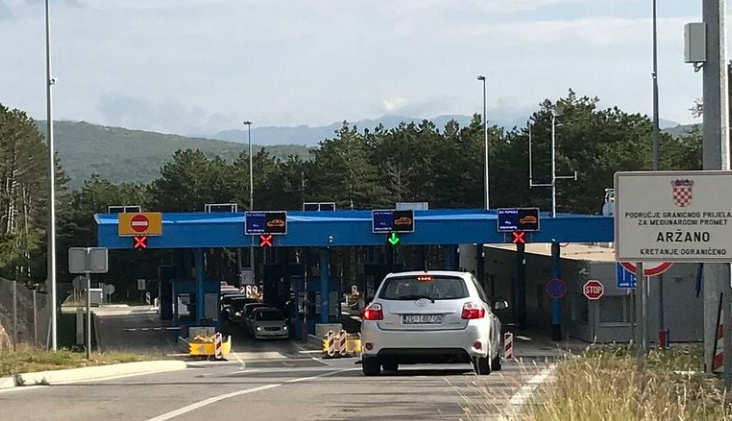Introduction to the New EU Entry/Exit System
Europe’s border landscape is about to change in a big way starting 12 October 2025. The European Union and affiliated Schengen countries will launch the Entry/Exit System (EES), a digital border control system designed to modernize and speed up cross-border travel. This shift impacts almost 30 countries and is planned to significantly alter the way travellers enter and leave the region.
What Is the Entry/Exit System (EES)?
The EES replaces the traditional passport stamp with a streamlined electronic record. Instead of the familiar inked stamp on a passport, travellers coming from outside the EU will have their information registered digitally. This includes collecting biometric data such as fingerprints or facial images—but only one of the two on the first visit, not both at the same time.
This biometric data is then stored and used to track travel durations, enabling border authorities to quickly detect anyone overstaying their permitted time in the EU.
Highlights of the EES Features
- Electronic registration of entry and exit without passport stamps
- Collection of biometric data (fingerprint or facial image)
- Real-time overstay detection
- Gradual rollout over six months after official launch
- Integration across 29 countries, including non-EU Schengen members
What Impact Will This Have on Travellers?
The aim is to make border crossing faster for frequent, bona fide travellers while adding security measures against illegal entries. But during the transition period, travellers may still encounter traditional passport stamping at some borders while biometric checks start appearing at others.
It’s wise to plan extra time when crossing borders during the coming months, as new procedures will take practice. Patience will undoubtedly be a virtue as travellers and border agents adjust to the system.
Table: EES Roll-Out Timeline and Traveller Experience
| Aspect | Details | Traveller Impact |
|---|---|---|
| Launch Date | From 12 October 2025 | New checks start varying by border |
| Data Collected | Biometric data + travel info stored digitally | No passport stamps; digital record replaces physical stamp |
| Transition Period | Up to 6 months for full roll-out | Mix of old and new procedures visible |
| Digital App | Launch delayed; still integrating with member states | Travelers won’t have app support immediately |
Connecting the EES Roll-Out with Your Taxi and Transfer Plans
When it comes to transfers and taxis, especially to and from airports situated at external EU borders, the new EES could subtly affect your travel timetable. As border check times may fluctuate during this phase-in, planning rides with a reliable taxi or transfer service that understands these changes is a smart move.
Online platforms like LocalsRide.com offer the advantage of choosing your exact vehicle model, seeing details such as car type, driver ratings, and fares upfront—helping you budget and schedule better amid shifting border formalities. You can book private transfers that adapt easily to your itinerary, allowing enough cushion time for slower border crossings without overpaying for idle wait times.
Tips for Transfer and Taxi Users
- Allow extra time for airport transfers near EU external borders
- Book transfers in advance to secure the best fare and vehicle choice
- Use services offering clear driver and vehicle info for peace of mind
- Check border crossing times and current procedures if crossing by cab
Summary of What You Need to Know
The EU’s Entry/Exit System coming this October 2025 heralds a new era of border control with biometric checks replacing traditional passport stamps to speed up travel and improve security. Over six months, it will be rolled out across multiple European countries, bringing a phased blending of old and new procedures. Travellers should anticipate varying experiences depending on the border and allow sufficient time for crossings.
For those relying on taxi and transfer services, particularly to airports or border cities, this system change means that flexibility and transparency in bookings will be more important than ever. Platforms like LocalsRide.com can help travellers access trustworthy vehicles and drivers, view exact fares, and plan for possible delays with confidence and ease.
Why Personal Experience Matters and How LocalsRide.com Helps
The introduction of the EES is a fascinating development for travellers, but even the best reviews and up-to-the-minute information can’t replace personal experience. Booking through LocalsRide means hiring a car with driver from reliable, verified providers at reasonable prices, empowering you to make informed choices without wasted expense or disappointment. The platform offers extensive vehicle options and additional services, so convenience, affordability, and transparency come as standard.
En iyi teklifleri alın at LocalsRide.com and travel with confidence, knowing you’ve planned your transfers with an eye on reliability and ease.
Looking Ahead: The Bigger Picture for Travel and Tourism
While the EES may not revolutionize global tourism overnight, it marks a thoughtful step toward smarter, more secure, and efficient border management across Europe. This development aims to balance travel ease for tourists and business travellers alike with stronger controls that can benefit the wider region’s safety and flow of visitors.
At LocalsRide, staying informed about such evolving travel landscapes ensures the platform can provide up-to-date, seamless booking experiences that keep pace with change. Start planning your next adventure with LocalsRide and secure your transfers worldwide with total peace of mind.
In essence, the Entry/Exit System transforms the crossing experience at EU external borders through digital innovation, with ripple effects for all travel-related services—especially taxis and transfers. Using trusted platforms like LocalsRide.com aligns perfectly with the evolving needs of modern travellers seeking precise prices, exact car and driver details, and flexibility in a changing border environment.

